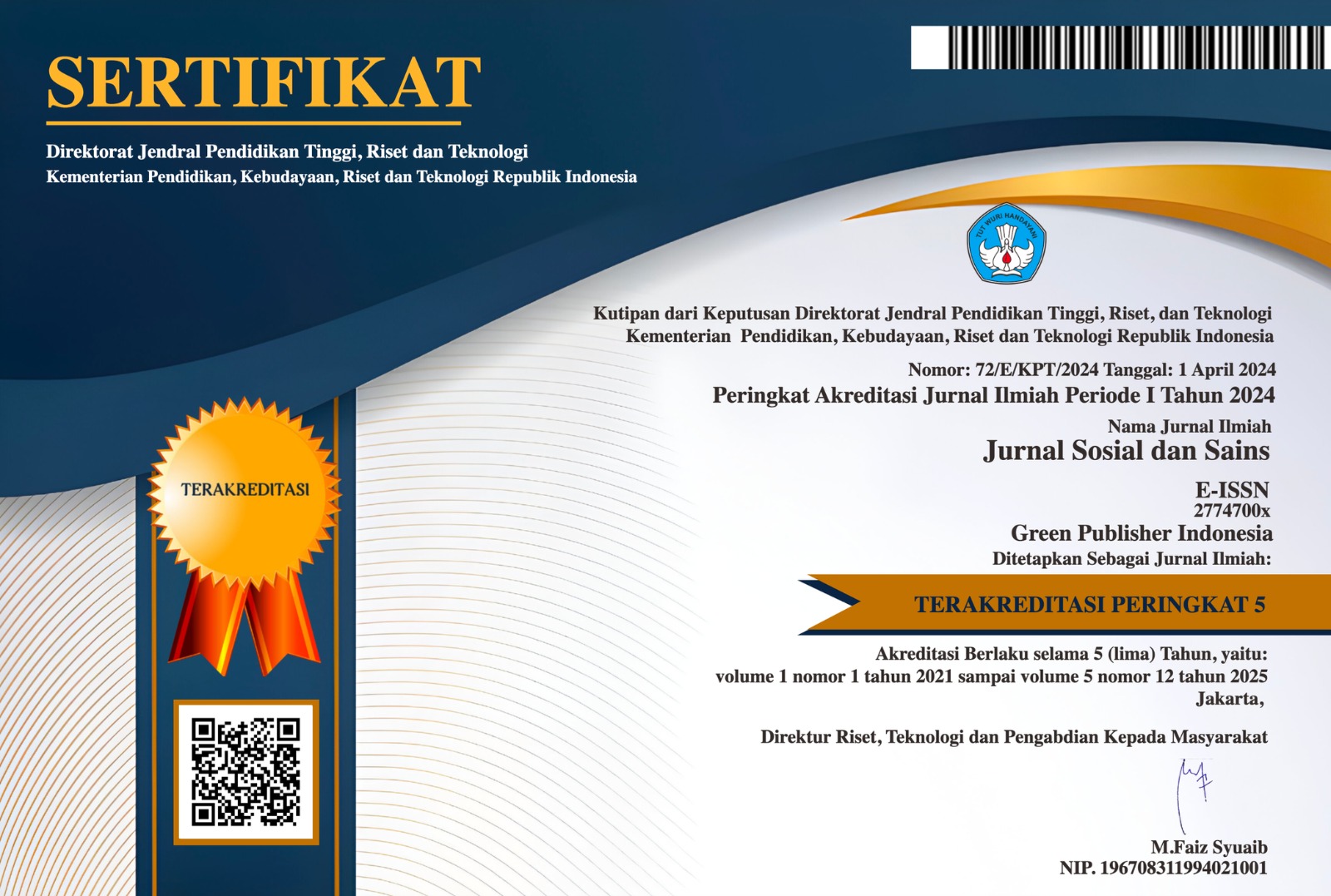Cessie in The Guarantee of Rights of Responsibility Reviewed from The Civil Code
DOI:
https://doi.org/10.59188/jurnalsosains.v3i6.811Keywords:
cessie;, debitur, kreditur, kpr, kepastian hukumAbstract
Background: Home Ownership Credit (KPR) activities are generally held by the Bank. However, often in mortgage practices there are often conflicts, one of which is bad debt. One solution that is often used by banks as creditors is to transfer receivables (cessie) to the mortgage object. But on the other hand, using the implementation of the cessie causes new problems, namely customers as debtors often object to the decision of the cessie.
Purpose: The purpose of the study is to find out and analyze the legal certainty of the cessie without the consent and knowledge of the debtor connected with the Civil Code and to know and review the description of the procedure of the cessie creditor against third parties as new creditors based on the Civil Code.
Methods: The method used is normative juridical, using analytical descriptive specifications, through literature studies and field studies, as well as data collection techniques, followed by data analysis.
Results: The research results show that online learning is not fully effective due to various inhibiting factors, and students' learning motivation is still not optimal.
Conclusion: Certainty of Cessie rules without the consent and knowledge of the debtor Connected using the KUHPer still does not regulate specifically regarding cessies, especially related to the implementation mechanism, so that this causes new conflicts such as the other error, not infrequently there are multiple interpretations in the implementation of cessie, especially in mortgage practice. Legal certainty of cessie still relies on Article 613 of the Civil Code to be the basis for the creditor's cessie. but on the other hand, the existence of multiple interpretations in interpreting Article 613 of the Civil Code causes objections made by debtors as cessus both through litigation and non-litigation.
References
Balperik, L. T., Bahmid, B., & Pratiwi, I. (2019). Pengaturan Hukum Perjanjian Serta Akibat Hukum Dari Kredit Rumah Kredit Pemilikan Rumah (Kpr). JURNAL TECTUM, 1(1).
Cahyono, A. B. (2004). Cessie sebagai bentuk pengalihan piutang atas nama. Lex Jurnalica, 2(1), 17969.
Darmawi, H. (2011). Manajemen perbankan. Bumi Aksara.
Erlina, B., & Gunawan, H. (2022). Perlindungan Hukum Terhadap Debitur Perorangan Atas Hilangnya Objek Jaminan Fidusia Pada Saat Kreditur Telah Berganti Karena Pelaksanaan Pengalihan Hak Atau Cessie. Jurnal Yustisiabel, 6(2), 240–254.
La Tenritata, A., Afriana, A., & Harrieti, N. (2022). Kepastian Hukum Terkait Pengalihan Piutang (Cessie) Dalam Praktik Kredit Pemilikan Rumah Ditinjau Dari Kitab Undang-Undang Hukum Perdata. Jurnal Poros Hukum Padjadjaran, 3(2), 327–340.
Moleong, L. J. (2010). Metodologi Penelitian Kualitatif (XXVII). Bandung: Remaja Rosdakarya.
Sari, P. N. (2010). Pengalihan Piutang Secara Cessie dan akibatnya terhadap jaminan hak tanggungan dan jaminan fidusia. Tesis,(Program Magister Kenotariatan, Fakultas Hukum Universitas Indonesia ….
Satrio, J. (1991). Cessie. Subrogatie, Novatie, Kompensatie, dan Percampuran Hutang, Alumni, Bandung.
Setiono, G. C. (2018). Jaminan kebendaan dalam proses perjanjian kredit perbankan (tinjauan yuridis terhadap jaminan benda bergerak tidak berwujud). Transparansi Hukum, 1(1).
Simanungkalit, J. P., & Hasni, H. (2019). Analisis Hukum Terhadap Pembeli Cessie (Cessionaris) Atas Penguasaan Objek Hak Tanggungan (Contoh Kasus: Penetapan Pengadilan Negeri Mempawah Nomor 130/Pdt. P/2018/Pn. Mpw). Jurnal Hukum Adigama, 2(2), 1424–1449.
Suherman, A. M., & Satrio, J. (2010). Penjelasan hukum tentang batasan umur. Nasional Legal Reform Program.
Sup, D. F. A. (2019). Cessie Dalam Tinjauan Hukum Islam. Jurisprudensi: Jurnal Ilmu Syariah, Perundangan-Undangan Dan Ekonomi Islam, 11(1), 44–73.
Waluyo, B. (2022). Penegakan hukum di Indonesia. Sinar Grafika.
Yangin, F. Y. (2016). Analisis Hukum Pengalihan Piutang (Cessie) Kepada Pihak Ketiga Menurut Pasal 613 KUH Perdata. Lex Privatum, 4(5).
Yulfasni, Y., & Hamler, H. (2023). Perlindungan Hukum Terhadap Penerima Cessie (Cesionaris) dalam Penyelesaian Kredit Macet Rumah Bersubsidi. Pagaruyuang Law Journal, 164–178.
Zathira, Z. (2015). Hambatan dalam Pelaksanaan Pengaturan Rasio Nilai Kredit (Loan To Value) dalam Kepemilikan Rumah Sederhana (Studi di PT. Bank Artha Graha Internasional, Tbk Cabang Kendari dan PT. Zarindah Perdana Cabang Kota Kendari). Brawijaya University.
Published
How to Cite
Issue
Section
License
Copyright (c) 2023 Doni Christian Nainggolan, Daffa Muhammad Nazar, Asmak Ul Hosnah, Yenny Febrianty

This work is licensed under a Creative Commons Attribution-ShareAlike 4.0 International License.
Authors who publish with this journal agree to the following terms:
- Authors retain copyright and grant the journal right of first publication with the work simultaneously licensed under a Creative Commons Attribution-ShareAlike 4.0 International (CC-BY-SA). that allows others to share the work with an acknowledgement of the work's authorship and initial publication in this journal.
- Authors are able to enter into separate, additional contractual arrangements for the non-exclusive distribution of the journal's published version of the work (e.g., post it to an institutional repository or publish it in a book), with an acknowledgement of its initial publication in this journal.
- Authors are permitted and encouraged to post their work online (e.g., in institutional repositories or on their website) prior to and during the submission process, as it can lead to productive exchanges, as well as earlier and greater citation of published work.








